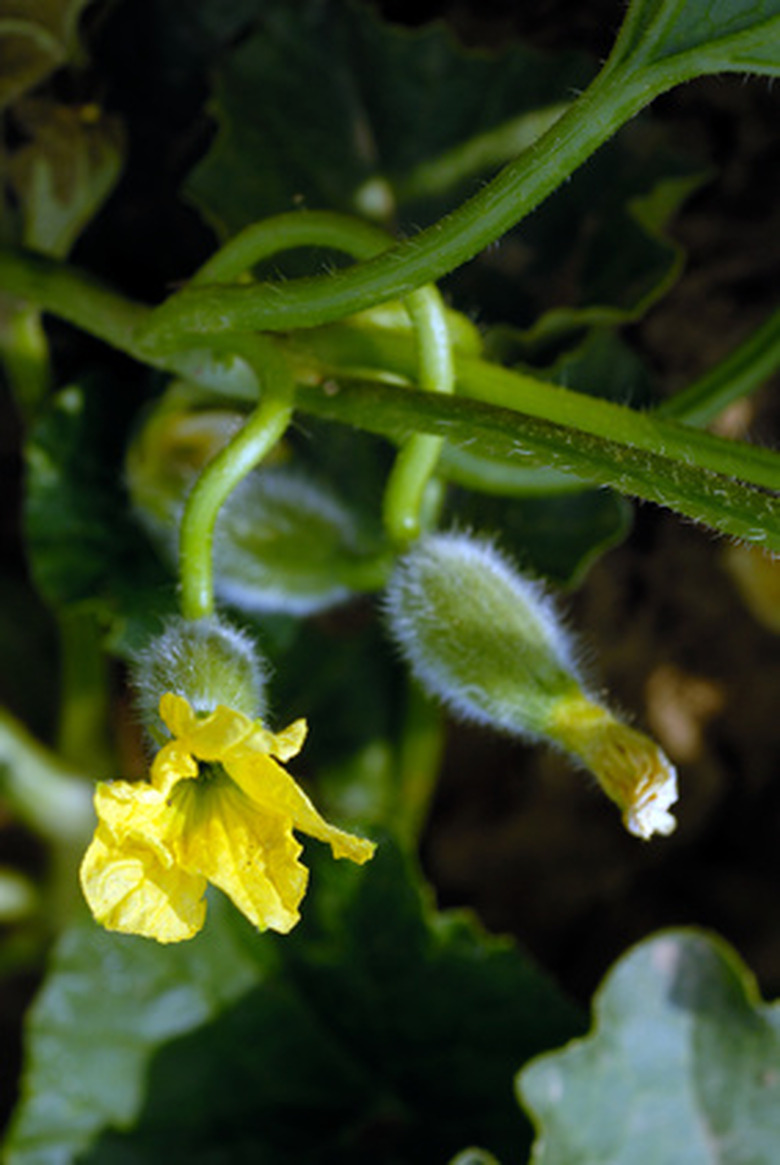Muskmelon Diseases
Muskmelons belong to the cucurbit family, which includes cucumber, squash and pumpkin. Honeydew and cantaloupe are three common muskmelons. As such, these fruits experience a number of plant diseases that vegetable growers should be familiar with. Muskmelon diseases are caused by fungus living in the soil, so gardeners that experience disease must treat or remove the soil before planting melons again.
Powdery Mildew
Melon plant leaves can contract powdery mildew, a fungal disease that leaves foliage and plant stems coated in a fine white dust. Affected plants develop fewer melon, and the melon is of poor quality. The disease occurs most frequently in humid or wet weather. Gardeners can plant muskmelon varieties that are naturally resistant to powdery mildew or can treat infected plants with copper-based fungicide.
- Muskmelons belong to the cucurbit family, which includes cucumber, squash and pumpkin.
- Muskmelon diseases are caused by fungus living in the soil, so gardeners that experience disease must treat or remove the soil before planting melons again.
Leaf Spot
Alternaria leaf spot affects melon plant leaves. Symptoms include spotting of the leaves; as the infection worsens, the lesions grow larger and display concentric rings. Lesions range in color from yellow to tan. The leaves also dry out and curl at the edges. The fungus that causes Alternaria leaf spot thrives in wet, warm weather. Gardeners can treat this disease preventatively (and not retroactively) using fungicides containing mancozeb.
Anthracnose
Another fungal disease, anthracnose, affects both the fruit and the leaves of muskmelons. Fruits develop dark indented lesions on the rind. Leaves develop yellow, tan or black blotches and can dry out. Cantaloupe is less susceptible than other muskmelons, according to North Carolina State University. Gardeners can plant disease resistant varieties or treat infected plants with fungicide. North Carolina State University advises gardeners to check with their local county extension office, since approved fungicides vary from year to year.
- Alternaria leaf spot affects melon plant leaves.
- The fungus that causes Alternaria leaf spot thrives in wet, warm weather.
Fusarium Wilt
Fusarium wilt of melon can kill affected plants gradually or suddenly. Plants can develop lesions along the stem, can suddenly wilt, can ooze gummy red sap or turn yellow or brown at the stem. Plants typically display some but not all of these symptoms. Gardeners can prevent this disease by planting melons in soil with a pH of 6 to 7 or by planting disease resistant types of muskmelon.
